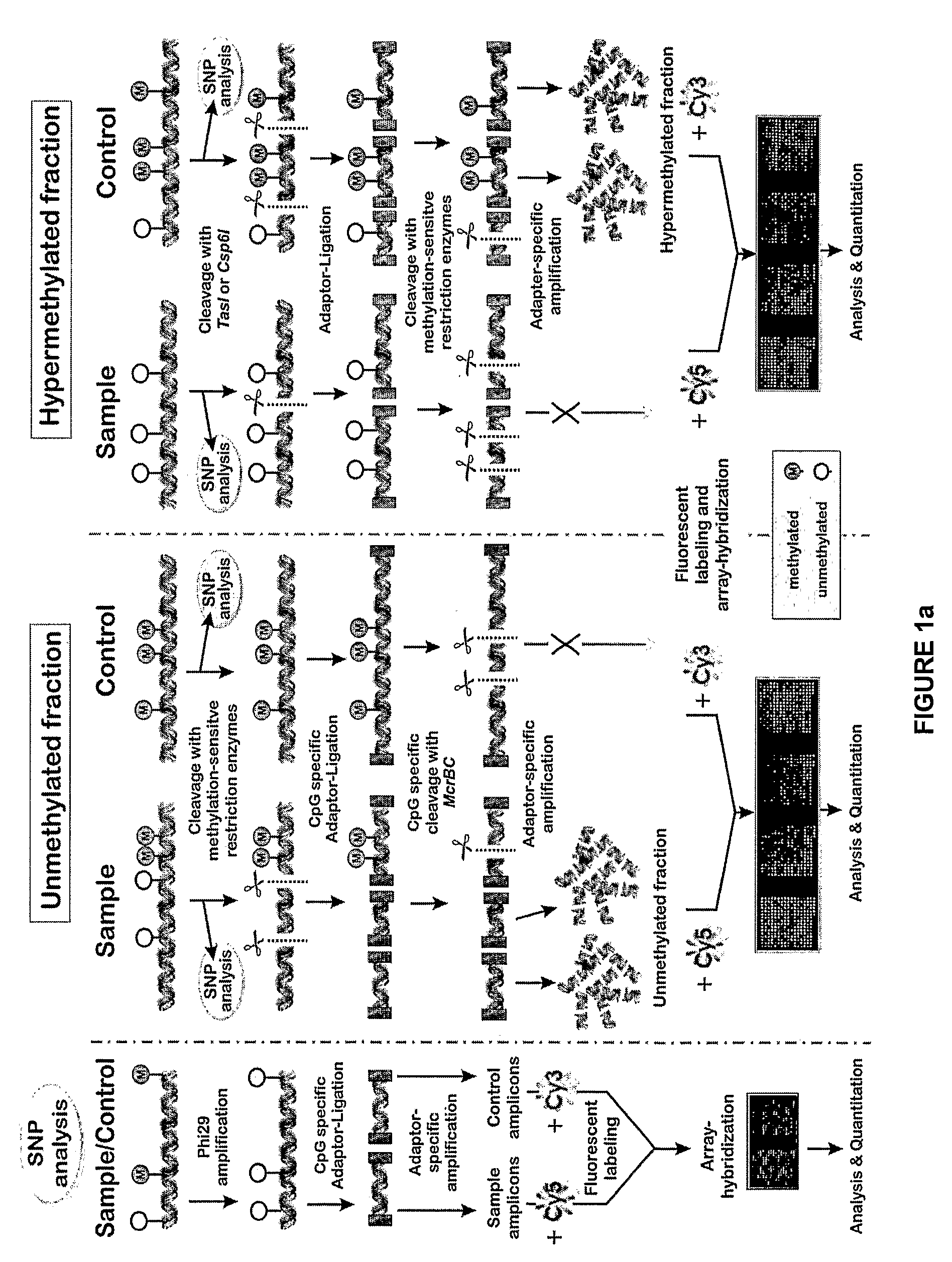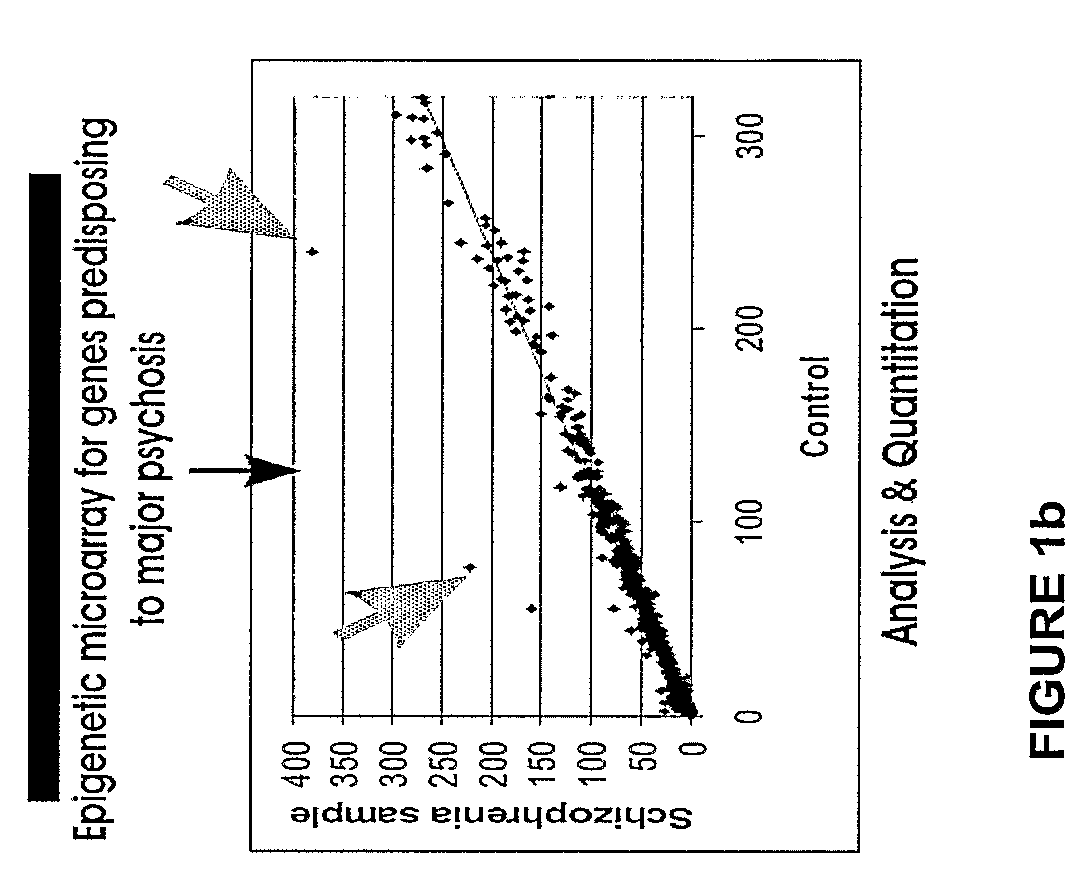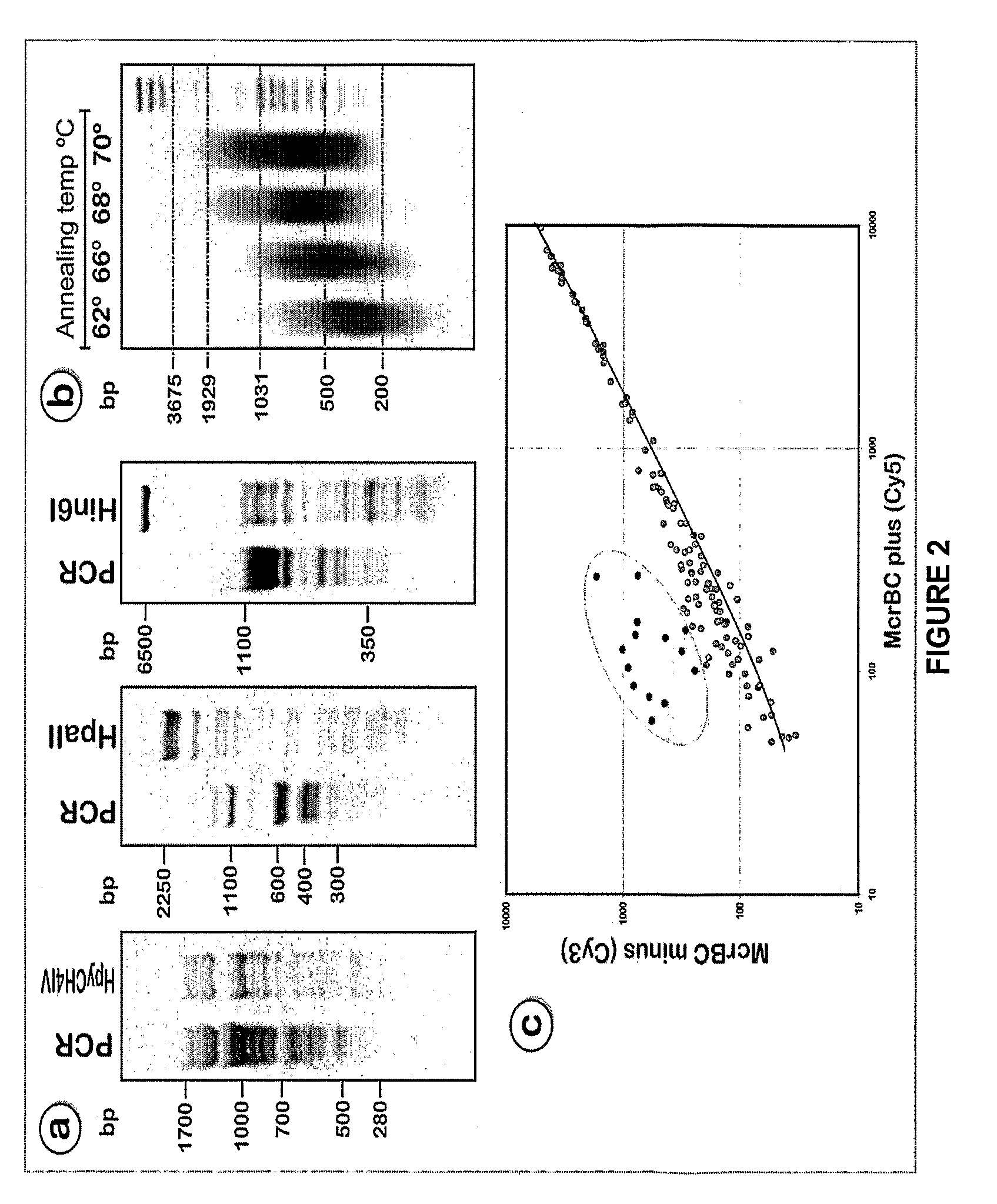CpG-amplicon and array protocol
a technology of arrays and amplicon arrays, applied in the field of epigenetic profiling methods and systems, can solve the problems of complex methods used by marstienssen et al., methods using a physical separation step that require relatively large amounts of starting materials, etc., and achieve the effect of substantially reducing the proportion of interrogated cpg sites
- Summary
- Abstract
- Description
- Claims
- Application Information
AI Technical Summary
Benefits of technology
Problems solved by technology
Method used
Image
Examples
example 1
Large Scale Profiling of DNA-methylation in a Variety of Genetic Elements, Cell Types, Tissues, and Test Subjects
[0135]Example 1 presents a comprehensive microarray-based high throughput technology for DNA methylation profiling of DNA regions that span from hundreds of kilobases to megabases and could be applied to the entire human genome. The approach is based on the enrichment of differentially methylated fractions of genomic DNA and the subsequent interrogation of these fractions on high-density DNA microarrays. Some microarray-based technologies used for epigenetic analyses are already available, however, below is a series of alternative and new aspects, such as focusing on the unmethylated (instead of the hypermethylated) fraction of genomic DNA and parallel detection of confounding effects of DNA sequence variation, among others.
Enrichment of the Unmethylated Fraction of Genomic DNA
[0136]The schema for enrichment of unmethylated portions of the genome is presented in FIG. 1. G...
example 2
Profiling of epiG DRD2 Using Microarrays
[0181]In an embodiment of the present invention, the method may be employed to profile epiG DRD2 using microarrays. In the embodiment, a microarray is designed that is specific for epiG profiling of the full length of DRD2, including the very long (˜250 kb) intron 1. Without wishing to be limiting in any manner, the general principle of the ‘epiG’ array comprises the hybridization of the hypomethylated (or hypermethylated) fraction of genomic DNA (or the DNA fraction associated with acetylated, methylated, for example, but not limited to histones) to the microarray containing oligonucleotides that represent the genomic region of interest. Intensity of hybridization correlates with the DNA methylation status at the genomic locus homologous to a specific oligonucleotide on the array. The microarray-based epiG analysis of DRD2 comprises the following steps:
[0182]i) Oligonucleotides for microarrays. Using the publicly available human genome sequen...
PUM
| Property | Measurement | Unit |
|---|---|---|
| temperature | aaaaa | aaaaa |
| temperature | aaaaa | aaaaa |
| temperature | aaaaa | aaaaa |
Abstract
Description
Claims
Application Information
 Login to View More
Login to View More - R&D
- Intellectual Property
- Life Sciences
- Materials
- Tech Scout
- Unparalleled Data Quality
- Higher Quality Content
- 60% Fewer Hallucinations
Browse by: Latest US Patents, China's latest patents, Technical Efficacy Thesaurus, Application Domain, Technology Topic, Popular Technical Reports.
© 2025 PatSnap. All rights reserved.Legal|Privacy policy|Modern Slavery Act Transparency Statement|Sitemap|About US| Contact US: help@patsnap.com



